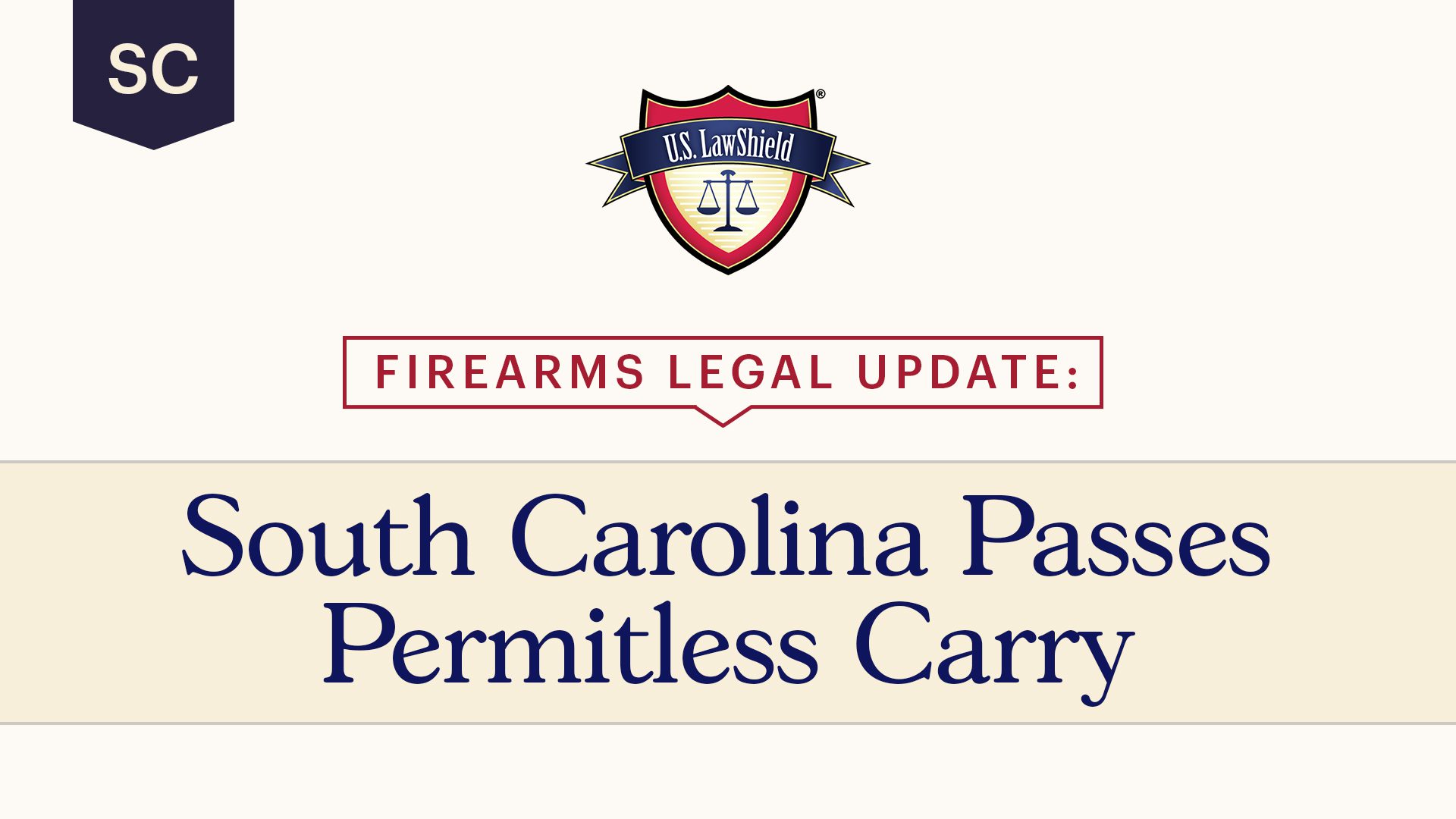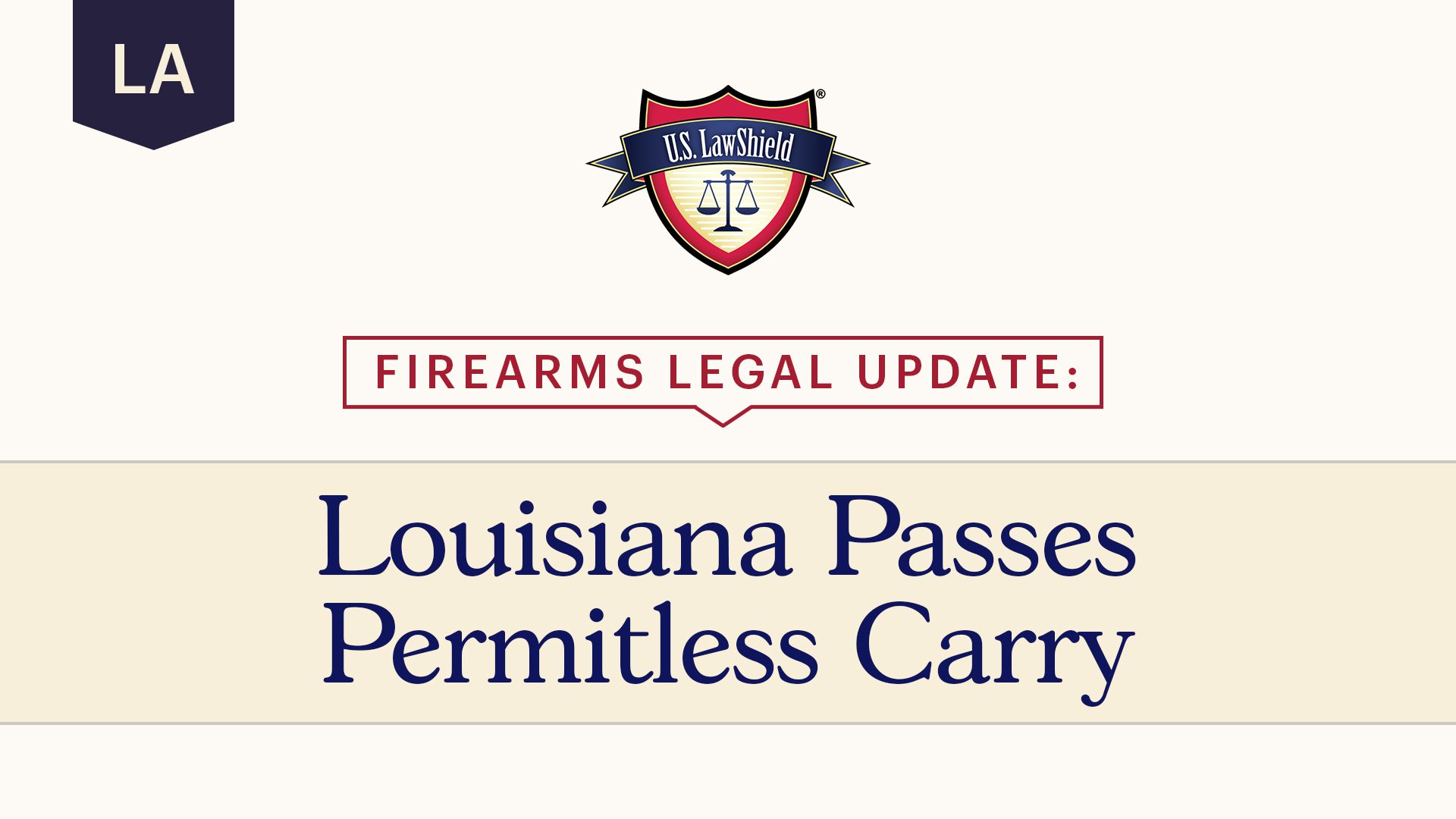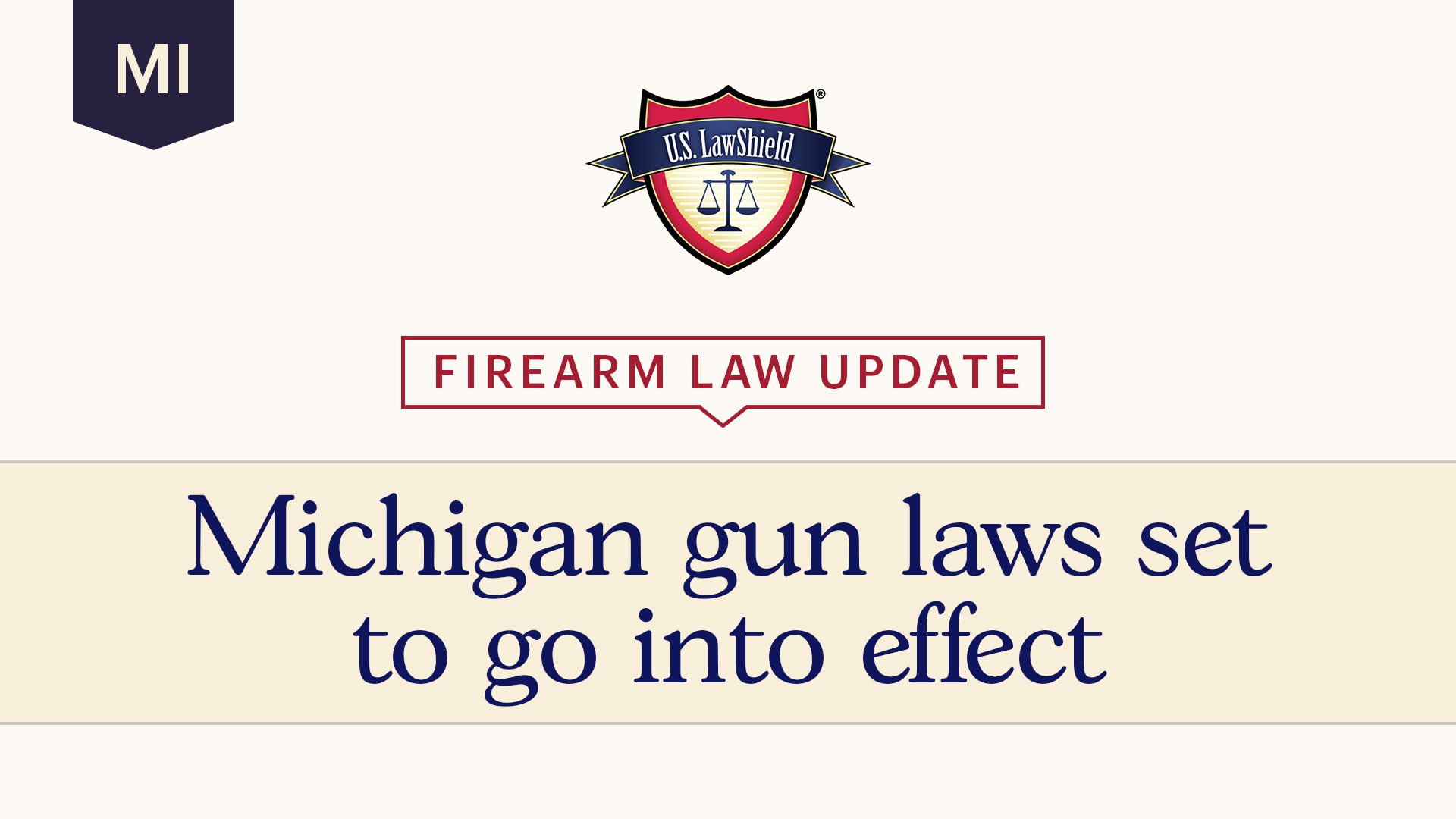
In California, criminal offenses are set forth, in large measure, in the California Penal Code. When confronted with a threatening situation, a person is entitled to take reasonable actions to defend themselves—the right to “self-defense.” Virtually any use of force, whether displaying or discharging a firearm, showing a knife, or taking some other action that potentially threatens to cause harm is subject to the “right to self-defense.”
A couple of things to bear in mind: even if you are entirely in the right, your actions are going to be judged by law enforcement, second-guessed, and sometimes criminal charges may be brought against you. So, the best course is NOT to use force or threaten to do so, unless it’s both necessary and the use of force is reasonable under all the circumstances.
What the Law Says
A person who is charged with a criminal offense under the Penal Code may be able to assert an affirmative defense, such as self-defense, to specific charges. Under California law, homicide (i.e., the killing of another) is justifiable and not unlawful when the person who does the killing actually and reasonably believes:
- That there is imminent danger that the other person will either kill them or cause great bodily injury to that person or another; and
- That it is necessary under the circumstances for them to use deadly force for the purpose of avoiding death or great bodily injury to them or another.
The law is set out in California Criminal Jury Instruction 5.12:
“A bare fear of death or great bodily injury is not sufficient to justify a homicide. To justify taking the life of another in self-defense, the circumstances must be such as would excite the fears of a reasonable person placed in a similar position, and the party killing must act under the influence of those fears alone. The danger must be apparent, present, immediate and instantly dealt with, or must so appear at the time to the slayer as a reasonable person, and the killing must be done under a well-founded belief that it is necessary to save one’s self from death or great bodily harm.”
Generally, if the facts are sufficient to justify the self-defense instruction, the State must disprove self-defense, or another affirmative defense applied. However, at least some evidence of the affirmative defense must typically be present to be raised and the jury to be instructed at trial. In other words, California law permits a person to raise an affirmative defense at trial against allegations of conduct that would otherwise be unlawful, so long as sufficient evidence in support of that defense has been presented.
Self-defense is one affirmative defense a person may raise, but only if there is some evidence supporting they acted in lawful self-defense, defense of others, or defense of property. Some of the typical charges a person may assert self-defense against include, Assault, Assault with a Deadly Weapon, Battery, Brandishing a Firearm, and Murder.
Generally, three separate legal concepts govern the laws of self-defense or defense of others in California. The first, and by far the most common, involves the use of force by a person against an attacker. This is general self-defense and should be distinguished from an attacker who is also an intruder into your home, which is the third legal concept discussed in more detail below.
Generally, the Right to Self-Defense Requires Three Things:
- The defendant reasonably believed that he or she (or someone else) was in imminent danger of suffering bodily injury;
- The defendant reasonably believed that the immediate use of force was necessary to defend against that danger; and
- The defendant used no more force than was reasonably necessary to defend against that danger—what we call the proportionality requirement. For example, you can’t just shoot someone who throws a snowball at you.
In other words, the threat to your life must be real and present at that moment and, as a result, required the immediate use of force in defense. Further, the use of force to repel such threat must be proportional to the nature of the threat, meaning you can’t use more force than reasonably necessary.
The term “reasonably believed” does not require the person’s belief to be correct. As such, a belief that he or she was threatened may be reasonable, even if they relied on information that turned out not to be true—like a police officer shooting a suspect who he reasonably believed was holding a gun, even if it turned out to be a cell phone. However, the person must actually and reasonably have believed that the information was true.
If this affirmative defense is raised, or if a judge determines sufficient evidence has been presented necessitating the need to instruct the jury as to self-defense, the prosecutor then has the burden of proving beyond a reasonable doubt that the defendant did not act in lawful self-defense or defense of others. If the prosecutor fails to meet this burden, the jury must find the defendant not guilty of the crime(s) charged.
Stand Your Ground
The second legal concept related to self-defense is called “Stand Your Ground.” This concept can apply both in or outside the home and occurs when a person is challenged with a deadly threat, but has the option of retreating from the danger (i.e., going out the backdoor or just fleeing). In California, a person is not required to retreat from the threat. A person is entitled to stand their ground, defend themselves and, if reasonably necessary, to pursue an assailant until the danger (of death or bodily injury) has passed. This is so even if the person could retreat to safety.
Enjoying this content? Find out how you can get more essential updates and self-defense information just like this sent straight to your inbox.
Castle Doctrine
The final, and most significant legal concept related to self-defense is known as the Castle Doctrine. It applies when a person uses force against an intruder solely inside the home. Cal. Penal Code 198.5 is referred to as California’s “Castle Doctrine.” It states “any person using force intended or likely to cause death or great bodily injury within his or her residence shall be presumed to have held a reasonable fear of imminent peril of death or great bodily injury to self, family, or a member of the household when that force is used against another person, not a member of the family or household, who unlawfully and forcibly enters or had reason to believe that an unlawful and forcible entry occurred.”
A person charged with a criminal offense for using force against an intruder of their home may be entitled to a jury instruction under this statute. This instruction is different from Stand Your Ground because, if certain conditions are met, the defendant will be presumed to have reasonably feared imminent death or great bodily injury, which is the first condition that must be met for a homicide to be justified under California law.
The conditions that must be met for a person to be given the benefit of this presumption are provided for in California Criminal Jury Instruction 3477 and listed as follows:
- An intruder unlawfully and forcibly entered, or was entering, the defendant’s home;
- The defendant reasonably believed that an intruder unlawfully and forcibly entered, or was entering, the defendant’s home;
- The intruder was not a member of the defendant’s household or family; and
- The defendant used force intended to, or likely to, cause death or great bodily injury to the intruder inside the home.
A defendant will be entitled to this jury instruction when there is evidence they had a reasonable expectation of protection against unwanted intruders. If this jury instruction is ordered, the prosecution then has the burden of overcoming the presumption that the defendant reasonably feared imminent death or great bodily injury to themself or a member of their family or household. Be advised that this doctrine only applies when the intruder has actually entered the home. If the intruder is merely a trespasser, but has not yet forcibly entered, deadly force generally cannot be used.
Defense of Real or Personal Property
Finally, a criminally charged defendant may also raise an affirmative defense at trial for defense of real or personal property. This defendant may also receive California Criminal Jury Instruction 3476. This instruction states the owner of a private property may use reasonable force to protect that property from imminent harm but may only use reasonable force to protect the property from immediate force.
Reasonable force means the amount of force that a reasonable person in the same situation would believe is necessary to protect the property from imminent harm, and a jury would be instructed to consider all the circumstances that were known to the defendant and consider what a reasonable person in a similar situation would have believed. Generally, deadly force may never be used solely in defense of property.
So, What Does This Mean for California Firearm Owners?
To illustrate, let’s compare these laws to the following hypothetical situations:
Example 1: John Doe pulls into his driveway upon returning home from a long day at work. John’s neighbor, with whom he’s had a long dispute over property lines, quickly approaches John from behind. John has heard his neighbor make threatening comments to him before. Knowing this, John hurriedly runs into his home and retrieves a firearm. John then returns to the front door to see his neighbor on his front porch with a knife. John shoots and kills his neighbor. Is John entitled to the self-defense instruction under California’s Castle Doctrine?
Answer: Close call, but probably not. The neighbor did not unlawfully and forcibly enter John’s home, and John’s front porch is not considered a part of his home. However, John may be entitled to California Criminal Jury Instruction 3470, depending on the nature of threat posed by the knife-wielding neighbor.
Example 2: Jane Doe is awakened in the middle of the night to sounds in her backyard. She looks out her bedroom window and sees three young men spray painting her detached garage and a prized vehicle. Jane grabs her self-defense pistol and walks out the back door, and into the yard. She then orders the men, at gunpoint, to leave. Nobody is injured. Did Jane act lawfully?
Answer: Likely, no. First, brandishing the firearm, which she did when she displayed the gun and/or pointed it at the intruders, requires that it be used only in self-defense. The use or threatened use of deadly force will likely not be considered “reasonable force” as described in California Criminal Jury Instruction 3476 for the purpose of protecting property.
Keep in mind, incidents giving rise to self-defense are always highly fact-specific inquiries. The laws surrounding self-defense in California can be difficult to apply to specific facts. However, for lawful firearm owners in California, the following generalizations can still be made.
- A person using deadly force within a home is going to have additional legal protections over a person employing deadly force outside the home because California law presumes that homeowners would be in reasonable fear of being killed by an intruder. But, actual entry into the home—or attempt to do so—is required. An intruder in the yard or front porch does not qualify.
- The use of deadly force outside of the home cannot be based upon a belief of future harm, no matter how serious or how offensive the threatening conduct is believed to be. Instead, the person must reasonably believe they are about to be killed.
- The use, or threatened use, of deadly force is likely never permitted to protect property. Don’t shoot a suspect running down the street holding your toaster or TV.
- Finally, even if you are initially the aggressor in a fight or altercation, you do not permanently forfeit your right to self-defense if the fight escalates. However, California law requires the initial aggressor to retreat or “de-escalate” the altercation before the right to self-defense would be restored.
If you have any questions, please contact U.S. LawShield and ask to speak with your Independent Program Attorney.
Your Protection Starts Here!
BECOME A MEMBERThe preceding should not be construed as legal advice nor the creation of an attorney-client relationship. This is not an endorsement or solicitation for any service. Your situation may be different, so please contact your attorney regarding your specific circumstances. Because the laws, judges, juries, and prosecutors vary from location to location, similar or even identical facts and circumstances to those described in this presentation may result in significantly different legal outcomes. This presentation is by no means a guarantee or promise of any particular legal outcome, positive, negative, or otherwise.





Is it considered self defense if the person killed was unarmed? And can the person claiming self defense automatically be set free without going to jail or seeing a judge? Also does it matter if the gun used isn’t registered to the person claiming self defense?
1) It may or may not be considered self defense if the person is unarmed. It depends on the specific circumstances. It always comes back to whether you REASONABLY believed you were in IMMINENT danger of SERIOUS BODILY INJURY OR DEATH. Or, more specifically, whether the jury believes that you were in IMMINENT danger of SERIOUS BODILY INJURY OR DEATH.
2) No, but if you get a good lawyer, you MAY be able to post bail pending trial.
3) No, but if you were carrying it unlawfully, you might be acquitted of murder or manslaughter if you have a valid claim of self defense, but be found guilty of unlawful firearm possession.
1) It may or may not be considered self defense of the person is unarmed. It depends on the specific circumstances. It always comes back to whether you REASONABLY believed you were in IMMINENT danger of SERIOUS BODILY INJURY OR DEATH. Or, more specifically, whether your criminal jury believes that you were in IMMINENT danger of SERIOUS BODILY INJURY OR DEATH.
2) No
3) No, but if you were carrying it unlawfully, you might be acquitted if you have a valid claim of self defense, but be found guilty of unlawful firearm possession.